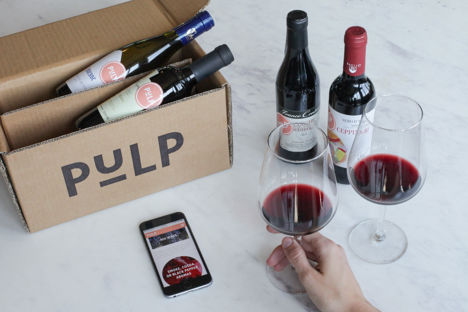
Pulp Wine: the app that discovers which wine is right for you
We signed up to Pulp Wine, a new start-up that aims to help people understand which varieties of wine they like and why. Here’s how it works and what we discovered.
Pulp Wine: the app that discovers which wine is right for you
We signed up to Pulp Wine, a new start-up that aims to help people understand which varieties of wine they like and why. Here’s how it works and what we discovered.
It’s something most of us struggle with. A supermarket aisle or shop shelf stacked high with wines featuring every kind of grape, vintage and country of origin imaginable. Unless you’ve spent some serious time (and money) tasting your way through different bottles and keeping track of those you did and didn’t like, you’re left at the mercy of whatever information is on the back of the bottle or the shelf. In supermarkets especially, it’s too easy to be drawn to whatever’s on offer, or sticking to the few particular varieties you’ve had in the past.
That’s where Pulp Wine comes in. Every month they send you four half bottles of wine, which you then rate online from 1 (you didn’t like it) to 4 (you loved it). As your ratings are collected, the team can then create a ‘wine taste profile’ which lets you know which styles of wine you should keep an eye out for. It’s a simple idea, but it’s how the monthly boxes are themed that really help you discover wine – one might find out whether you prefer light or full-bodied styles, or the sorts of fruit flavours you like to find in a bottle. They’re meant to be drunk side-by-side, so you can compare properly and really find out what’s best for you. You can either drink them casually or really get involved, reading about the wines on the Pulp website (which even includes little summaries on different aspects of wine, food matching and winemaking). In any case, when you're out shopping or in a restaurant you can access your 'Wine ID' at any time through your phone, which should make choosing the right bottle easy.
To put it to the test, CEO and founder of Great British Chefs Ollie Lloyd and editor Tom Shingler tried out Pulp with their partners – hardly the worst gig in the world. The first box was designed to find out whether they liked oaked or unoaked wines, both white and red. The box included a 2015 Australian Chardonnay from Shaw + Smith (white, oaked); a 2016 Spanish Rioja Blanco from El Coto (white, unoaked); a 2012 French Montagne Saint-Emilion from Chateau Gachon (red, oaked) and an organic 2015 Italian Montepulciano from Jasci (red, unoaked). Here’s how we rated them, and what that means for our wine profiles.
Find out more about Pulp Wine and how they are helping people get a grasp on what wines they like by listening to founder Paolo on The FoodTalk Show Podcast.
Ollie and Shehani
Ollie and Shehani rated their wines exactly the same as each other: Unoaked red 4/4, oaked red 3/4, oaked white 3/4 and unoaked white 2/4. ‘Both seem to have different preferences when it comes to reds and whites,’ says Paolo. ‘This is not unusual at all as many of us look for different features in whites and reds and we enjoy them in different settings. It looks like both Ollie and Shehani have a preference for oaked whites, even though they weren’t blown away by either. I suspect that in general they tend to prefer reds, and that they prefer wines with lower acidity – something we will confirm with later tastings. Because they liked the unoaked Montepulciano the most, I suspect they like reds with more intense flavours, with a bit of spice and pepper. If so, they should enjoy wines such as Australian Shiraz and Argentinian Malbec.’
Tom and Jess
There was a lot less agreement between Tom and Jess with the same wines. Tom rated the oaked white 4/4, the unoaked white 2/4, the oaked red 3/4 and the unoaked red 2/4. ‘Tom shows a consistent preference for oaked wines, especially oaked whites,’ explains Paolo. ‘The oaked white has a more intense oaked flavour than the red, which seems to confirm this. Given these ratings, I expect he also likes more full-bodied wines, which we will put to the test next time.’
Jess, on the other hand, rated the unoaked white 4/4, with the oaked white getting a score of 2 and both reds only 1/4. ‘I suspect Jess may be attracted to white wines with nice intense aromas – the Rioja Blanco she tasted is made with three quite aromatic grapes (Viura, Verdejo and Sauvignon Blanc),’ says Paolo. ‘She might also like the high freshness of this wine, which is thanks to its higher acidity. Jess doesn’t seem to be fond of reds in general, which may be because of the tannins (one of the six components in wine that in particular dries your gums) and the lower acidity. Both of these features are characteristics you’ll find in red wines as opposed to white.’
The first box certainly made it clear that oaking makes a huge difference to the wines we enjoy or steer clear of, but it's obviously just one aspect. With every new box, Pulp's analysis becomes more and more refined. Next time, we’ll be looking at whether we like light or full-bodied wines.
Like the sound of Pulp? Check out their Indiegogo page for a 40% discount.


